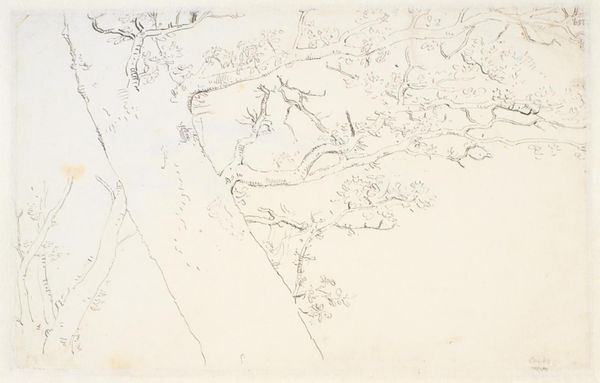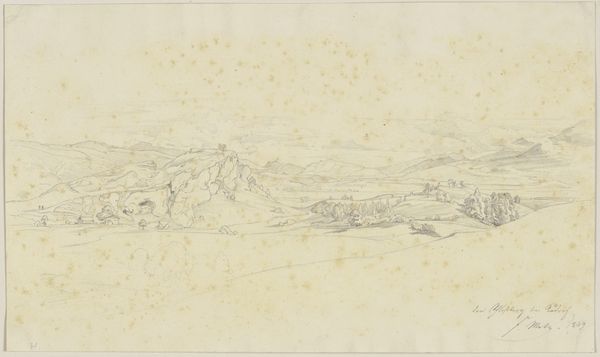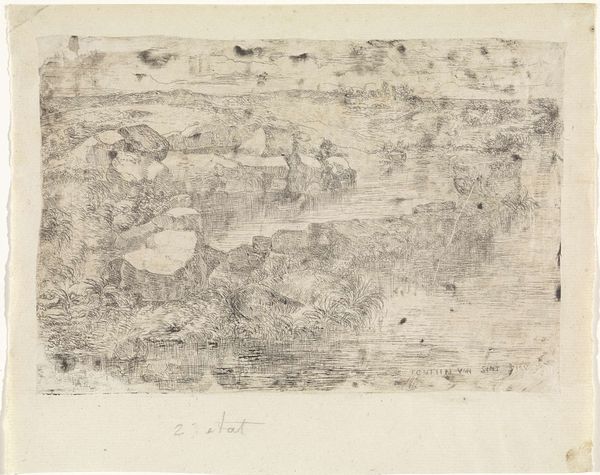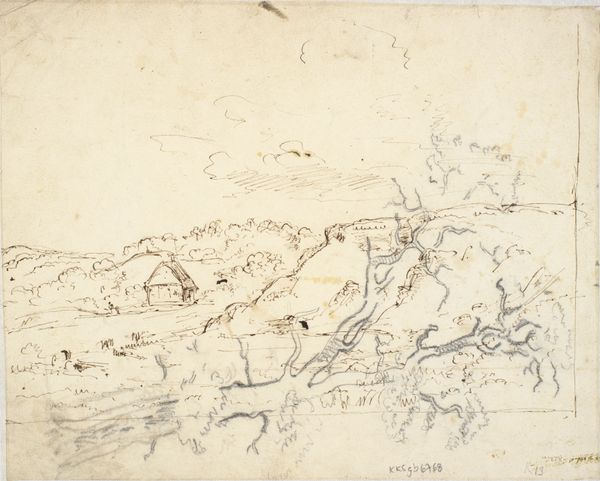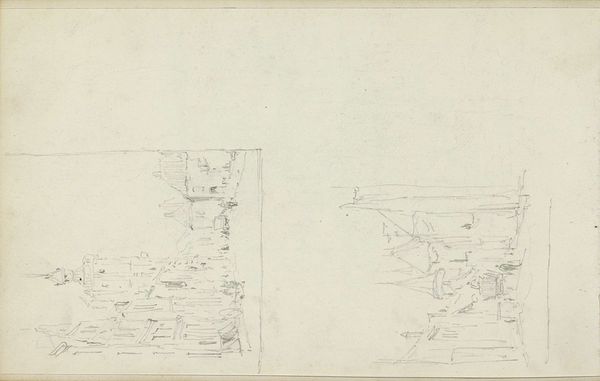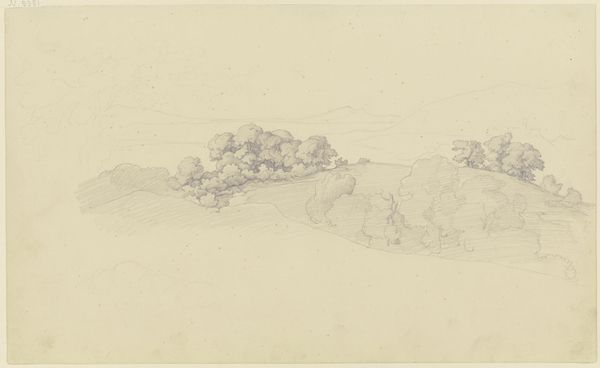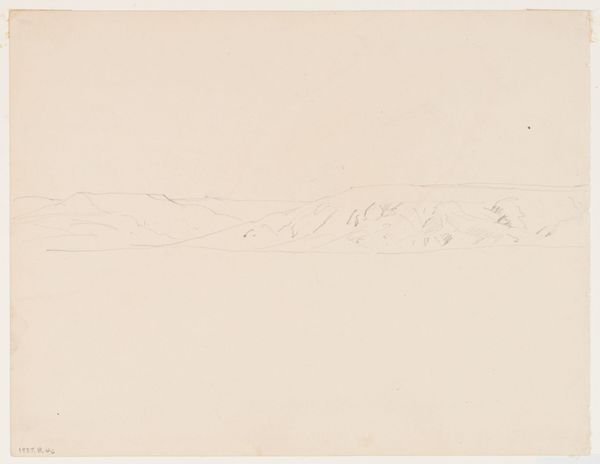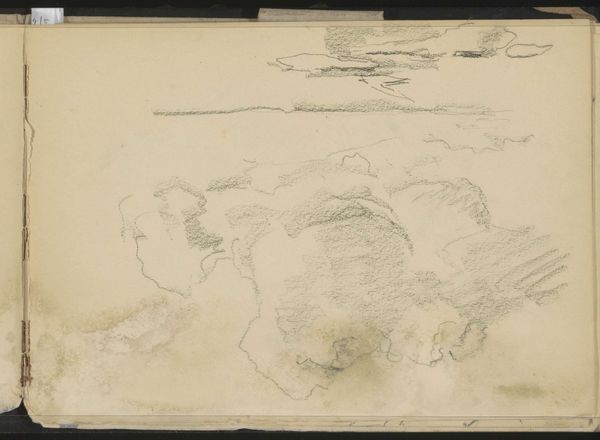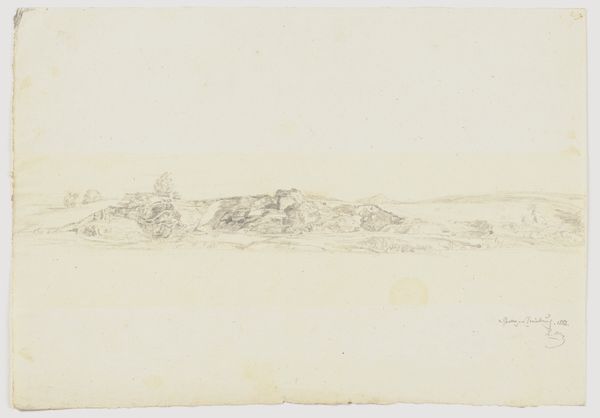
drawing, pencil
#
drawing
#
pencil sketch
#
landscape
#
romanticism
#
pencil
#
northern-renaissance
#
watercolor
Dimensions: 205 mm (height) x 328 mm (width) (bladmaal)
Editor: This is "Landskabsudkast m.m.," a landscape sketch by Dankvart Dreyer from 1842, rendered in pencil. It's fascinating, almost ghostly, with its pale hues and faint lines. It almost looks like the ghost of a landscape... or a landscape yet to be born. What do you see in this piece? Curator: It's interesting you say "ghostly." I immediately think about the context of 19th-century Denmark and the changing relationship to land, property, and ownership. Sketches like this weren't simply aesthetic exercises. For Dreyer, coming from a time of significant agrarian reform, mapping and delineating space became entangled with political power and access. The way he lays out the landscape, the very act of observing it through the drawing, connects with how the land was being conceptualized and utilized at that time. Editor: So you're saying the seemingly objective act of drawing a landscape could actually be imbued with socio-political implications? How so? Curator: Absolutely. Consider the cart-like figure and what seems like boundary markers – these become tools of possession. Landscape art, during this period, participates in constructing and reinforcing certain ideologies of land ownership, potentially reflecting or even shaping unequal access and distribution. Were these representations accessible to all, or did they mainly cater to those in power? The "Romantic" vision is hardly ever neutral. Editor: I never thought about it that way. Seeing this artwork as a product and possible engine of political change reframes how I engage with Romantic landscapes. Curator: Exactly! And perhaps it makes us question what other supposedly "objective" viewpoints are also deeply embedded with power dynamics that we still need to dismantle. It forces us to ask, whose perspective are we prioritizing? What realities are made invisible? Editor: Food for thought. Thank you!
Comments
No comments
Be the first to comment and join the conversation on the ultimate creative platform.
